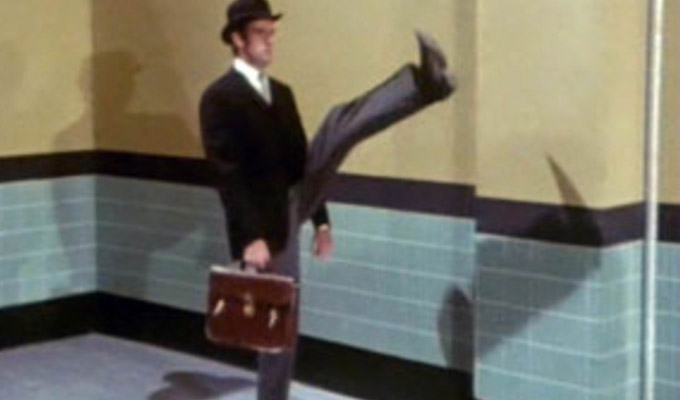
How silly walks could keep you in shape
Scientific research finds health benefits in the John Cleese gait
 It could be time for the Government to set up a real life Ministry of Silly Walks – as new scientific research has shown that walking like John Cleese's character in the sketch could help you get in shape.
It could be time for the Government to set up a real life Ministry of Silly Walks – as new scientific research has shown that walking like John Cleese's character in the sketch could help you get in shape.
A new paper published in the latest issue of the British Medical Journal says that walking like Mr Teabag was equivalent to vigorously intense physical activity, burning 100 calories every 12 minutes.
Lead author Glenn Gaesser of Arizona State University concluded: ‘Had an initiative to promote inefficient movement been adopted in the early 1970s, we might now be living among a healthier society. Efforts to promote higher energy—and perhaps more joyful—walking should ensure inclusivity and inefficiency for all.’
Adopting Mr Teabah’s gait requires considerably more energy expenditure than a normal walking style because the movement is so inefficient, according to the paper, Quantifying the benefits of inefficient walking: Monty Python inspired laboratory based experimental study.
The paper also analysed the benefits of walking like Mr Putey, the character played by Michael Palin, who is seeking a grant from the Ministry to develop his own silly walk – however this provides not nearly as good a workout as Mr Teabag’s efforts.
Dr Gaesser’s research adds to the body of knowledge in this extremely important field.
In 2020, two scientists at Dartmouth College, New Hampshire, studied both walks for the journal Gait and Posture, finding that Teabag's silly walk is 6.7 times more variable than a normal walk, while Putey's is only 3.3 times more variable.

However, energy expenditure was not measured in that study. Dr Gaesser, a professor of exercise physiology, laments: ‘In fact, we are not aware of a single study that has quantified the energy cost of walking like Teabag or Putey in the 51 years since the MoSW skit first aired. Given its potential to contribute to PEMPA [‘practice of effort maximisation in physical activity’, a term he just coined], the purpose of this study was to fill this vital research gap.’
After getting all-important clearance from Arizona State University’s ethics review board, researchers had 13 volunteers walk normally, then mimic Tebag and Putey’s styles. The distance covered during each trial was recorded and the average walking speed was calculated for each walk.
The paper notes the methodology: ‘Ventilation and gas exchange were recorded throughout each trial for determination of oxygen uptake (V̇O2; mL O2/kg/min) and carbon dioxide production (V̇CO2; mL CO2/kg/min), which were used to determine the respiratory quotient (V̇CO2/V̇O2). The kcal (1 kcal=4.18 kJ) per litre O2 value for each respiratory quotient was used to convert V̇O2 to energy expenditure.’

For both men and women, walking like Teabag resulted in expending about 2.5 times more than regular walking or walking like Putey.
There may also be an additional health benefit. The paper notes: We did not measure minutes spent laughing or number of smiles as secondary outcomes while walking inefficiently. Smiling during the inefficient walking trials could not be observed due to participants’ mouths being obscured by the facemask worn during data collection.
‘However, all participants were noticeably smiling upon removal of the facemask. Moreover, bursts of laughter from the participants were frequently noted by the supervising investigator, almost always when participants were engaging in the Teabag walk.’
The researchers also noted the limitations of their small sample, concluding: ‘At present, we cannot advocate generalising the findings of this research and general suggestion to decrease efficiency in movement to other forms of exercise such as mountaineering, water sports (except aquatic aerobics), or urban cycling.
‘Inefficient dancing has been around for generations but, too often, that lone innovator at your local nightclub or on your cruise ship has been the subject of derision rather than justifiable admiration.’
And they conclude: ‘There is an unfortunate history in comedy of able bodied people mocking people with disabilities, atypical gait, or movement disorders. Our analysis of the energy consumed during different styles of walking seeks to empower people to move their own bodies in more energetic—and hopefully joyful—ways.’
However not everyone is physically able to do a silly walk – including Cleese himself. As long ago as 2006, he said: ‘I can't do it because I've had a hip replacement - probably because I did so much of it. I don't know how I even managed in the first place.’
Published: 22 Dec 2022






